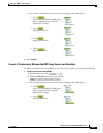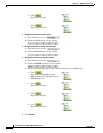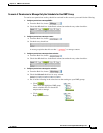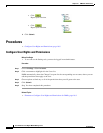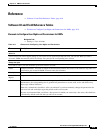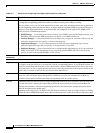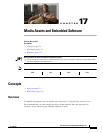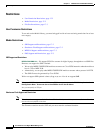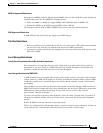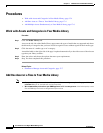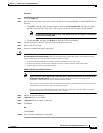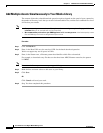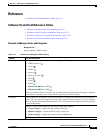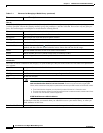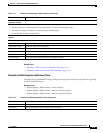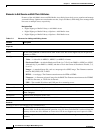
17-3
User Guide for Cisco Digital Media Manager 5.2.x
OL-15762-03
Chapter 17 Media Assets and Embedded Software
Concepts
MPEG-4 Support and Restrictions
Our support for MPEG-4 requires that you use the MPEG-4 Part 2 or Part 10 (H.264) codec and that you
multiplex audio and video in an MPEG-2 Transport Stream.
• When your DMP is a 4400G, we support MPEG-4 Part 10/H.264 video in MPEG-2 TS.
• Neither the 4300G nor the 4305G supports MPEG-4 Part 10/H.264.
The filename extension must be MPG or MPEG and you must enter the estimated duration.
PNG Support and Restrictions
A DMP 4305G in this release does not support use of PNG images.
File Size Restrictions
• Before you add any asset, confirm that its file size is not more than 1.9 GB, which is the maximum
stream size for any asset that you include in the layout for a DMD presentation.
• For purposes of stage-one failover, the combined size of all assets cannot exceed the capacity of the
SD card in a DMP.
Local Storage Restrictions
Locally Stored Presentations Should Not Include Remote Assets
We recommend as a best practice that you avoid calling upon any remote assets from a playlist or
presentation to you store locally to a DMP. Otherwise, any network disruptions will interfere with
playback of media that should be impervious to all such disruptions.
Local Storage Restrictions for DMP 4310G
A DMP 4310G that uses an attached USB storage volume might corrupt or erase data on this attached
volume. Likewise, a DMP 4310G might lose its ability to mount this attached volume. After the DMP
reaches this general state, it sometimes reports incorrectly that the attached volume is still mounted
and working.
These problems can occur when you disconnect the external volume from the upper USB interface on a
DMP 4310G and then, without any delay, plug it immediately into the lower USB interface on the same
DMP. However, these problems do not occur in every such case. In our tests, they occurred
approximately 1 percent of the time.
To reduce your possible exposure to these problems, wait no less than 3 seconds after you connect or
disconnect an attached volume, before you do the reverse. In our tests, this best practice eliminated
the risk.
Restart the DMP if it merely unmounts its attached volume.
There is no workaround after the attached volume is erased or its data becomes corrupted. All that you
can do after the fact is reformat the volume and restore its data from a recent backup.



